 https://www.teamipro.com/wp-content/uploads/2024/09/Screenshot-2024-09-06-at-12.19.43 AM.png
976
1532
Pat Anunciacion
https://www.teamipro.com/wp-content/uploads/2023/07/IPRO.png
Pat Anunciacion2024-09-25 01:00:182024-09-25 05:21:16Leveraging Cloud VoIP for Seamless Remote Work in Dallas
https://www.teamipro.com/wp-content/uploads/2024/09/Screenshot-2024-09-06-at-12.19.43 AM.png
976
1532
Pat Anunciacion
https://www.teamipro.com/wp-content/uploads/2023/07/IPRO.png
Pat Anunciacion2024-09-25 01:00:182024-09-25 05:21:16Leveraging Cloud VoIP for Seamless Remote Work in DallasEnhancing Digital Fax Security for Businesses
Electronic faxing, or eFax, has become essential for quick and efficient document sharing in today’s business environment. Unlike traditional faxing, eFax transmits documents over the Internet, offering a faster, more eco-friendly alternative. However, this convenience comes with a price: vulnerability to cyber threats. Common dangers include phishing attacks, where scammers deceive you into revealing private information, malware that can damage your systems, and unauthorized access to your transmitted faxes.
Protecting sensitive information goes beyond keeping internal data safe; it extends to maintaining client confidentiality and trust. A security lapse can lead to significant financial loss and tarnish a company’s reputation. Therefore, prioritizing eFax security measures is essential for any organization that depends on digital communication for sharing important documents.
Understanding eFax Security Risks
When we talk about eFax, we mean sending faxes over the Internet. While it’s convenient, it also opens doors to certain risks. Just like leaving your house unlocked can invite thieves, not securing your eFax can invite hackers. They might sneak in through weak passwords, outdated software, or unsecured Internet connections.
Imagine if someone got hold of your business’ private faxes. This could lead to what we call a data breach. There are different types of these breaches. Some might expose customer information, while others could reveal your company’s secret plans or financial details. The impact? Well, it’s like a domino effect. First, your business could lose money — sometimes a lot of it. Then, people might start losing trust in your company. Once trust is gone, winning it back can be challenging.
Let’s picture a couple of scenarios. For example, a company’s eFax system has a weak password. A hacker guesses it and accesses hundreds of confidential faxes. Or, imagine another company where an employee accidentally sends a sensitive fax to the wrong number because the eFax system isn’t set up right. Both these situations can lead to big problems, showing just how crucial it is to keep your eFax system secured tight.
Best Practices for eFax Security
Keeping your eFax safe is like ensuring your house is locked and secure. Here are some critical steps to protect your digital documents:
Use Strong Passwords
Use strong passwords and make sure only the right people can get into your eFax system. Think of a password like a lock. You wouldn’t use a weak lock on your front door, right? The same goes for eFax. Also, check who is sending and receiving faxes. This is called user authentication. It’s like knowing who has the keys to your house.
Keep eFax Up to Date
Next, always keep your eFax software up to date, just like fixing a broken window so burglars can’t get in, updating software patches up security holes. If there’s an update available, don’t wait — install it to keep hackers out.
Ensure a Secure Internet Connection
Another critical step is to use secure Internet connections and encryption. This means making sure that sending a fax is like sending a letter in a locked, unbreakable box instead of a clear envelope. Encryption scrambles your faxes so only the person with the correct key can read them.
Limit Access to eFax
Lastly, set up role-based access control and train your employees. Think of your company like a castle. Not everyone needs a key to every room. Give people access only to the parts they need for their job. And just like teaching your family about home safety, train your employees to use eFax securely. They should know how to spot dangers like phishing emails and what to do if they see something suspicious.
Advanced eFax Security Measures
Keeping your eFaxes safe requires more than just basic steps. Here’s how you can add extra layers of protection, like a high-tech security system for your home.
End-to-end Encryption for Fax Transmissions
Having end-to-end encryption is like sending a secret message only the person with a unique key can read. When you send a fax, this type of encryption ensures it’s scrambled from start to finish. Only the intended receiver can unscramble it and read the contents.
Multi-factor Authentication (MFA) and Biometric Security
Multi-factor authentication (MFA) is like needing both a key and a code to open a lock. It requires you to use two or more ways to prove it’s really you. On the other hand, biometric security means using unique body features, like fingerprints or facial recognition, to get access. It’s like having a lock that only opens for your unique touch or look.
Secure Cloud Storage Solutions for Fax Documents
Using secure cloud storage for your fax documents is also crucial. Imagine moving your important papers from a drawer in your house to a bank vault. This is what secure cloud storage does for your faxes. It keeps them safe in a digital ‘vault’ where only people with the proper permission can access them.
Compliance with Industry Standards and Regulations
Following rules like HIPAA (for health information) and GDPR (for personal information in Europe) is essential. These rules are like the laws of keeping information safe. Following them ensures your eFaxes are not just secure but also legal.
Implementing a Secure eFax Policy
Making sure your eFax system is safe is like setting up rules in a game: everyone needs to know what they are and follow them to play right. Here’s how you can make and use a good set of rules or a security policy for eFax:
- Create your security policy: Think of this as writing down the rules of the game. Decide who can send and receive faxes, what kind of information can be faxed, and how to keep that information safe. Then, make sure everyone knows these rules. Train your team on these guidelines like you’d teach someone a new game. Check regularly to make sure everyone is following the rules.
- Check for weak spots in your eFax system: This is done through security audits and assessments. It means looking closely at your eFax system to find any weaknesses—places where hackers could break in. Then, just like fixing a broken lock, you fix these weak spots. Doing this regularly keeps your system strong and safe.
- Plan for emergencies: Imagine if someone broke into your house. You’d want a plan to deal with the burglar and to fix any damage. For eFax, this means planning what to do if there’s a security breach. Who do you call? How do you stop the breach? And how do you get your system back to normal afterward? Having a clear plan and practicing it ensures you’re ready for anything.
Securing Your Business’s Digital Future
Securing your eFax system is crucial to protecting your business’ confidential information and shielding your clients’ sensitive data, fostering trust and integrity within your professional relationships. Business leaders, CIOs, and CEOs should prioritize these security measures as they are instrumental in defending the company against cyber threats and maintaining its reputation.
Now is the time to evaluate your organization’s eFax security stance. Assessing and enhancing your eFax protocols is essential in today’s digital age. If the task seems daunting or improvements are necessary, partnering with a managed service IT company like IPRO can offer the expertise and support needed to fortify your eFax systems. We can provide tailored solutions that cater to your business’ unique needs, ensuring your digital communications remain secure.
 https://www.teamipro.com/wp-content/uploads/2024/09/Screenshot-2024-09-06-at-12.19.43 AM.png
976
1532
Pat Anunciacion
https://www.teamipro.com/wp-content/uploads/2023/07/IPRO.png
Pat Anunciacion2024-09-25 01:00:182024-09-25 05:21:16Leveraging Cloud VoIP for Seamless Remote Work in Dallas
https://www.teamipro.com/wp-content/uploads/2024/09/Screenshot-2024-09-06-at-12.19.43 AM.png
976
1532
Pat Anunciacion
https://www.teamipro.com/wp-content/uploads/2023/07/IPRO.png
Pat Anunciacion2024-09-25 01:00:182024-09-25 05:21:16Leveraging Cloud VoIP for Seamless Remote Work in Dallas
Closing Security Gaps to Protect Your Business


